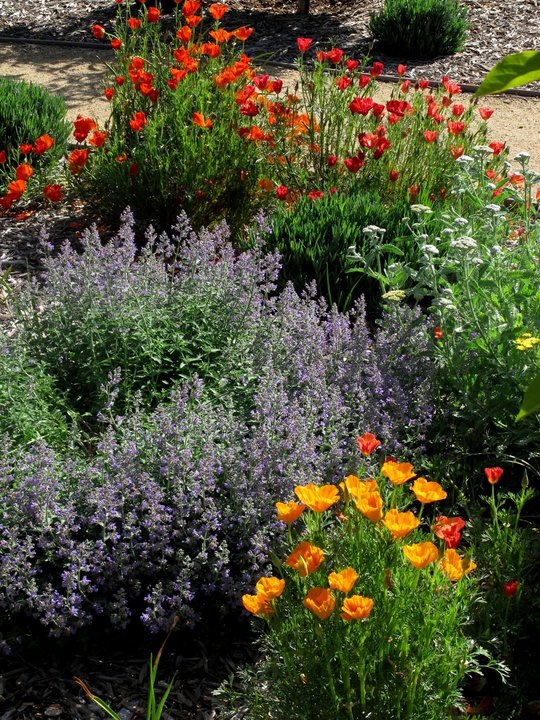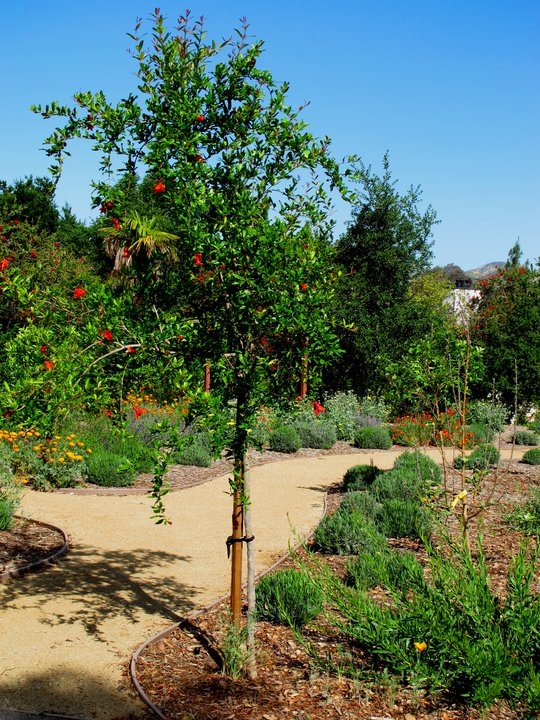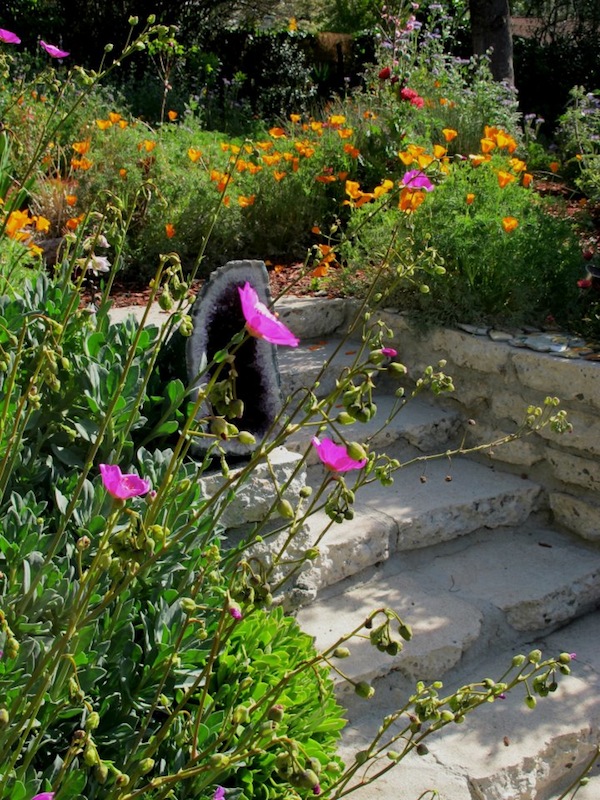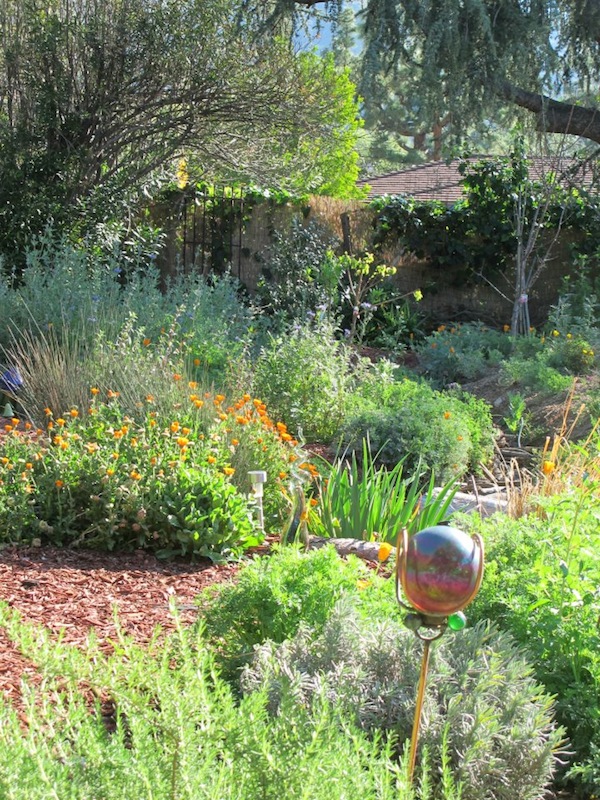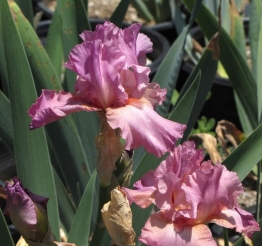Having it all, Your California Native Garden and Edibles too!
Having it all, Your California Native Garden and Edibles too! by John Lyons, the Woven Garden.
John does both consulting and landscape design for native, edible, and both native and edible gardens that feed each other. His website for the Woven Garden is: http://www.thewovengarden.com. And you can reach him by clicking the “contact” button on his website or phone: (323) 793 – 3239. His Facebook page is: https://www.facebook.com/The-Woven-Garden-168228913206332/. Most of John’s business is in the Los Angeles/Pasadena areas but parts west are good too!
(Note most of the pictures of John’s creations are at the end of this short article …the treat at the end!)
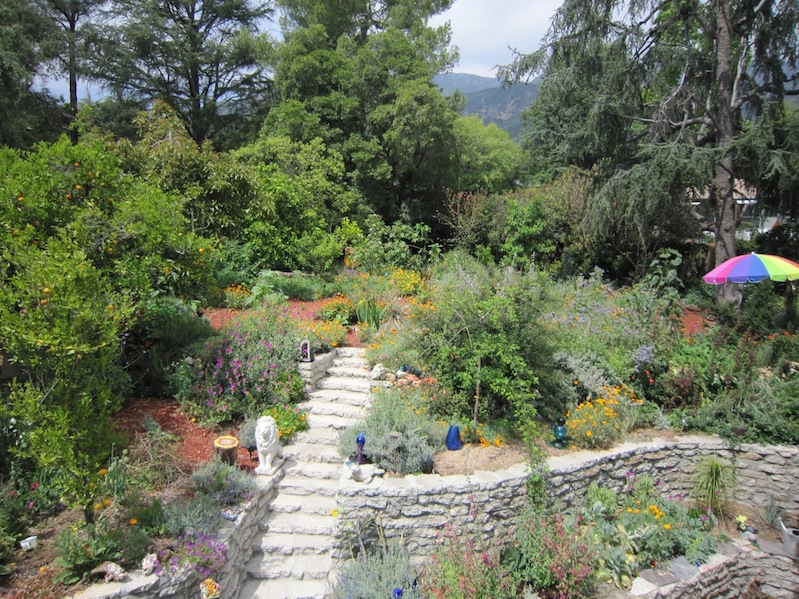
When I started out in design I specialized in all things edible because not many people were doing it. Then I developed a keen interest in California natives, took a course at UCLA and attended numerous lectures at various local institutions. In time I began to develop a design concept that brought both, seemingly at odds gardening concepts, together. It goes without saying that growing food requires water and having a native garden as your ornamental design offsets the water usage. Recently greywater systems have become sophisticated and despite initial outlay are a wonderful way to reuse household water when you follow the guidelines, and some well filtered systems make household water useable even in edible gardens.
Even of you have a small yard you can grow a combination garden. A few options are possible. Designated vegetable boxes (wooden usually and raised..12” to 24” high) within a garden, either in front of your house or at the back. Boxes are neat and do not detract if you want a front yard to look tidy. Semi dwarf fruit trees can be incorporated into a formal design but they too require the same watering regimen as edibles. Another option is to grow on designated berms (raised earth mounds) within a native garden. These edible sections would require a different valve and timing system. A third option is a permaculture or quasi permaculture system when you create a food forest of integrated food plantings. In the latter case a native garden on the periphery could easily be created to co-exist within the overall design.
Apart of the water savings there are many reasons to grow a native garden within the vicinity of food. (1) Aesthetics. A beautiful vibrant fragrant native garden is a wonderful place to be when you are tending crops. (2) Native plants attract all manner of beneficial insects. If you stop to admire an Eriogonum fasiculatum (buckwheat) in the wild you will be astonished to find a myriad of insect life feeding on it; honeybees, various wasps, butterflies and a host of smaller insects. (3) The soil requirements for a native garden are minimal and all your composting can be dedicated to the edible section of your garden. (4) The native garden will benefit however from shredded prunings and clippings that can be used as a water retaining mulch.
Selections that I use frequently: Toyon, Arctostaphylos, Ceanothus and Coffee berry as outer hedging elements.
Shrubs such as buckwheat, Salvia clevelandii, Salvia lemonii, Abutilon palmerii, Encelia californica, Galvezia, Salvia apiana, Monardella villosa and various grasses such as Muhlenbergia rigens, Juncus and Leymus. Plantings such as Heuchera in large drifts under fruit trees, Salvia spaethacea, and Achiellea (sometimes as a lawn substitute). In winter, in what I call the negative space ie: non-irrigated I liberally broadcast wildflower seeds and the winter rains are usually enough to bring them along. In a dry winter it may require hand watering those areas in times of long dry spells. There is a perfect symbiosis to be achieved in growing food within a native garden, beauty in surroundings, pollinators abound and knowing that you are helping conserve our precious resource, water.
(Note pictures remind me of the idealized classic California landscapes as depicted in what has become known as “orange crate art” from the 1920’s to the 1960’s. If you don’t know what it is then Google it and click images for a real treat.)
